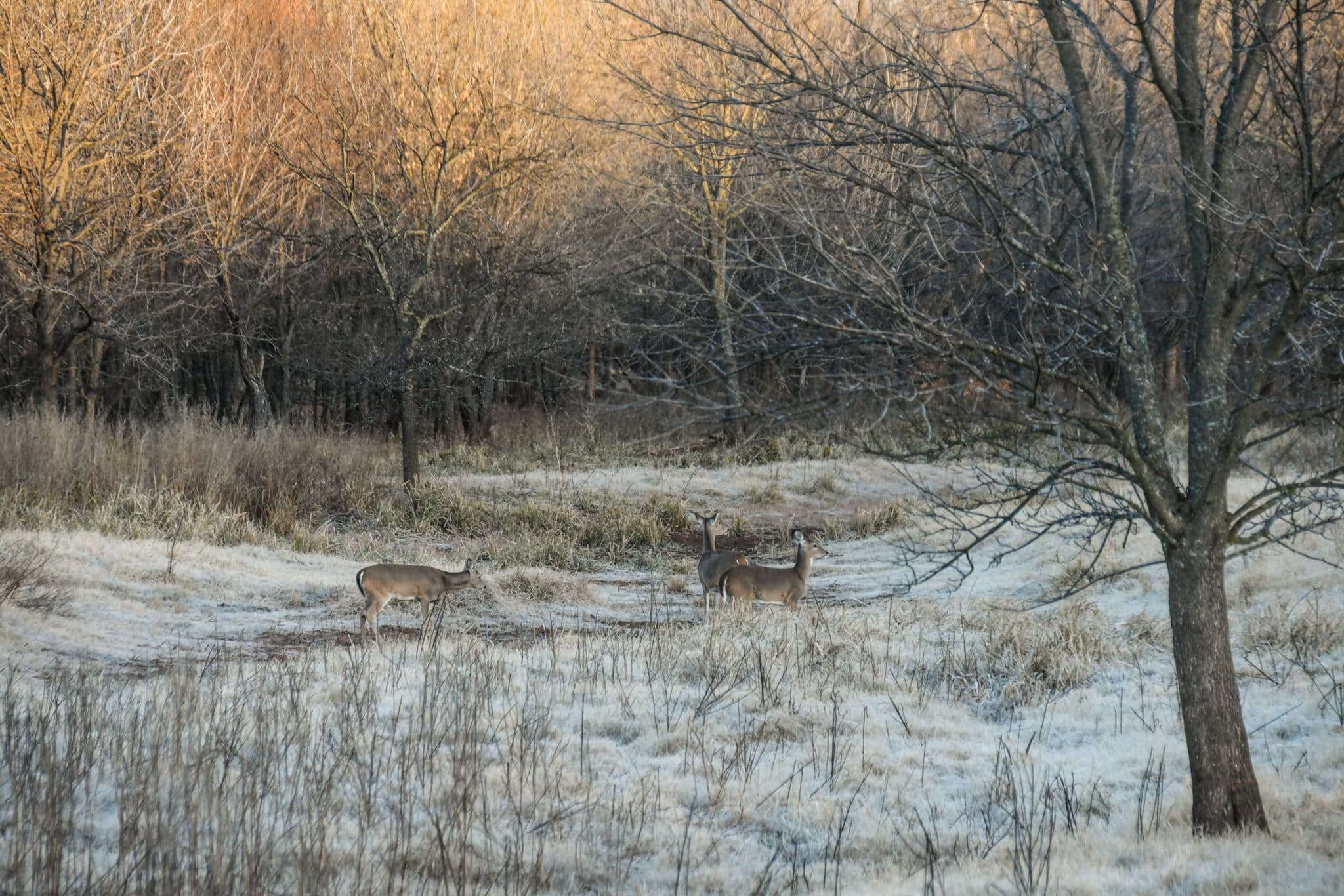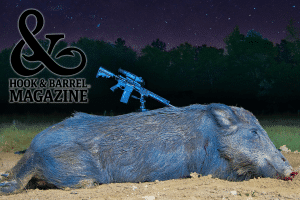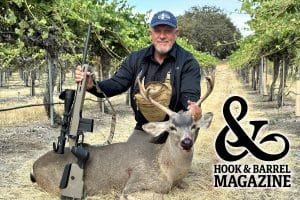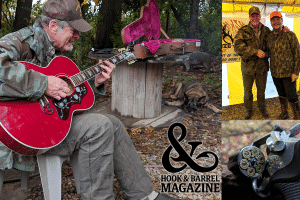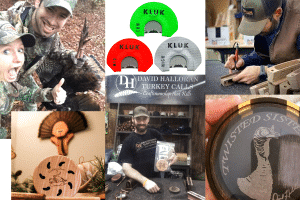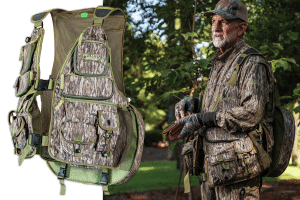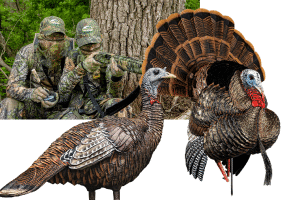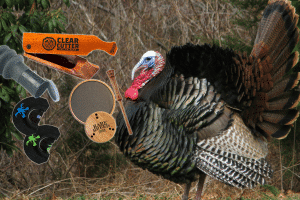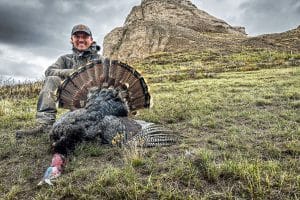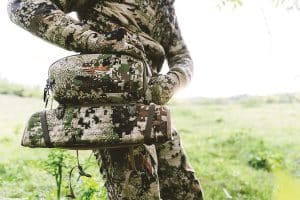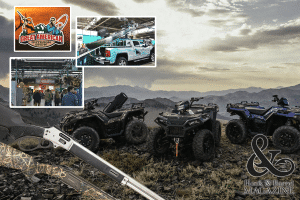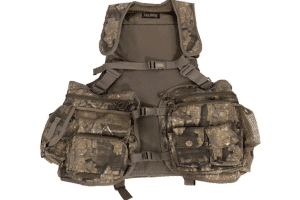- By Connor Judson Garrett
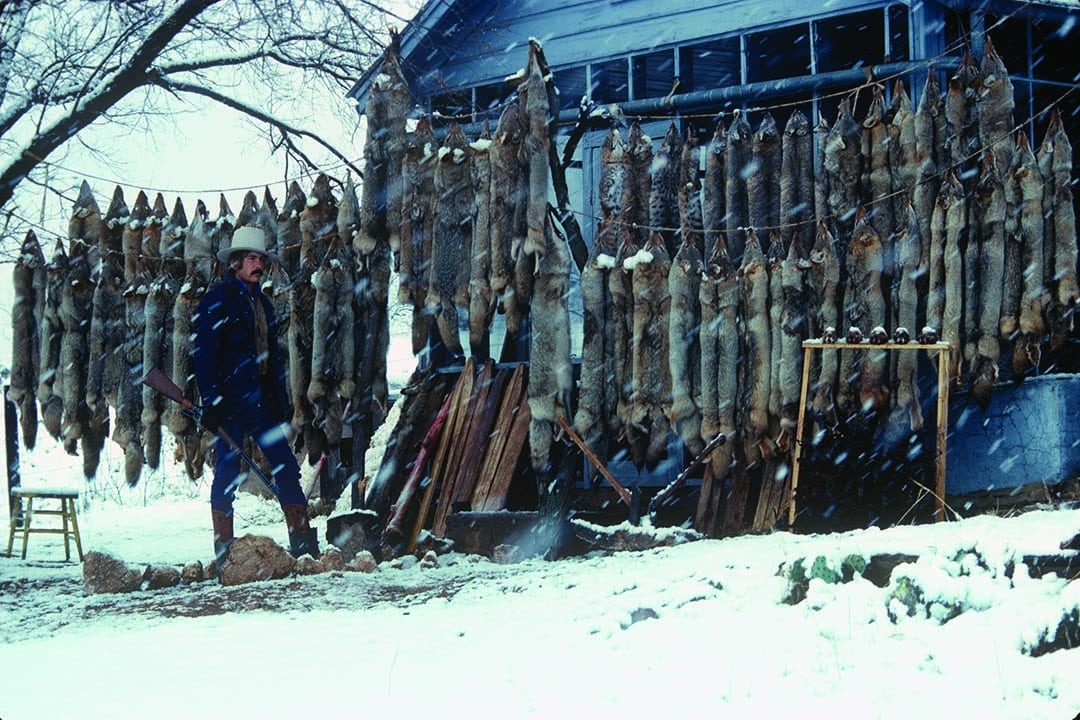
In Native American folklore, the coyote is often portrayed as a trickster, using deception and humor to get its way. The Navajo believed that the coyote brought death into the world. According to legendary trapper Dan Brown of Mountain Home, Idaho, the Navajo were onto something.
“They don’t call them wily coyote for nothing,” he says. “They’ve been around for 3,000 years and they breed faster than you can kill them. Worst of all, they have a 70 percent predation rate on fawns. Coyotes are extremely smart, so it’s all about matching wits with them.”
Brown has been trapping coyote since he was 12 years old with and now has 40 years under his belt. Twenty-five of which, he says, have been serious business. Last year, he killed more than 800 coyotes and estimates that he also trapped anywhere from 150 to 200 bobcats.
“I got into the business because of the market,” Brown says. “It changes every few years, but right now the western heavy coyotes are hot. Anyway, trapping put food on the table. I’m a contract trapper. I’ve been working the ranch I’m on right now for 10 years, covering half a million acres. You should see about 30-to-35 percent of fawns to doe. If you don’t, it means you’re not doing a good job keeping the coyotes under control. Most big ranches keep someone on staff just to kill coyotes. That’s what I do.”
The United States government shares his conviction. The U.S. Department of Agriculture’s Wildlife Services agency sends helicopters to fly over coyote habitats with a policy of shooting on-sight. USDA gunmen can kill as many as 100 coyotes in a single day. Other government methods deployed by Wildlife Services include trapping and shooting as control measures. In total, the government kills roughly 80,000 coyotes per year at an annual cost of $20 million, passed on to the taxpayer. 
But the reason they’re willing to spend such a whopping sum of money on killing coyotes is simple: population management. Coyotes wreak havoc on livestock and deer and will eat virtually anything, even small dogs and crops such as watermelon and cantaloupe.
The popularity of coyote fur is surging. The North American Fur Auctions 2018 auction season reports that although the fur market as a whole has been struggling, coyotes proved to be in high demand with 100 percent of the 73,000-plus pelts selling out even as their prices spiked. According to NAFA, heavy coyotes averaged $106 per pelt, semi’s averaged $57, Eastern coyotes, which were selling for about $20 a pelt two years back, more than doubled in average price to $41. These prices are not entirely indicative of what coyotes might fetch at a local auction or what country buyers would pay, but it confirms the global demand for coyote fur is on the rise.
Before the fur is ready for sale, the coyote has to be skinned, fleshed to get rid of any mud, burs, or blood, debugged of fleas and other insects, and stretched and dried over a forming board. This process is to help maintain the furs’ “primeness” — a subjective assessment of its color, quality and size. The trapper sells it to a buyer, who works with a manufacturer to turn their catch into the collar or trim of a high-end coat — like the trim of the popular Canada Goose brand parka.
“In the 1930s a famous trapper by the name of E.J. Daly revealed one of the secrets of the trade: The dirt hole set,” says Thomas Duke, director of Duke’s Traps in northern Mississippi. “Before then, it wasn’t well-known or widely used. Daly would always say he learned it from watching the fox dig his hole and put his food down in it. The same tactic works for coyotes. Mimic the way they dig it sloping down, put food in, make sure there’s an obstacle to make them come in facing forward, and set up a backer so they can’t come in from the back.”
Dan Brown also says that the dirt hole set is 99 percent of his coyote hunting arsenal. “I use Duke’s 1 ¾ traps. I see a lot of guys with bigger traps. They’re not catching what I’m pulling in. I don’t get paid if I don’t catch. I’m spending eight-to-10 hours a day, seven days a week in the field.”
If you shoot, shoot to kill, or else the coyote just becomes smarter from the experience and harder to get rid of.
Coyotes reproduce faster, have larger brains and are more efficient killers than dogs and wolves as evidenced by the coyote’s trademark single, fatal bite to the throat. Sheep, goats and calves are the most vulnerable to these attacks, which is why the coyote has developed a particularly nasty reputation among ranchers. They say that scaring a coyote off is only a temporary solution since the wily canine wisens up. If you shoot, shoot to kill, or else the coyote just becomes smarter from the experience and harder to get rid of.
Clint Cary, another well-known trapper from eastern Tennessee, echoes the difficulty of coyote trapping. “It’s not like catching racoons, where you can put out a trap and they’ll just go wandering in,” Cary says. “With coyotes, you have to be persistent. You may not even have a coyote come by for days, but don’t adjust until you’ve seen tracks or signs that they’ve been through.”
Adds the trapper, “I like to use multiple baits and odors in a set. I use a call lure within 10 feet of the set, gland lures to intrigue the coyote, multiple odors and baits in a set, and besides that, I check and re-check the traps. To landowners, I tell them to put three to four sets in an area, depending on state regulations, and to just put in the time.”
Cary adds that the behavior and predatory habits of a coyote are site specific. In his part of Tennessee, they do not pose as large of a threat to livestock or deer herds as neighboring areas. Cary also says that’s why it is essential to keep track of fawn recruitment to assess the problem.
“There’s a special kind of satisfaction from catching a coyote,” Duke says. “You have to create a specific set for a specific type of animal. Trapping from one area to another is also different, and coyotes can adapt to all of them.”
Stephanie Braman of Mellon Creek Outfitters in Refugio, Texas, is well-versed in a variety of environments for hunting coyote. However, she specializes in calling coyotes, the act of mimicking their sounds to lure them close enough to shoot.
“It’s not just about location or species: There are so many factors that go into it,” Braman says. “I’ve hunted in New Mexico and all over and every scenario is unique. I tell people that here in south Texas, it’s difficult to control the coyote because there’s so much dense brush. It’s extremely hard to see them coming. On our ranch, certain areas flood and you can’t really get to them, so that exacerbates the problem. On top of that, we have a ton of dogs and dogs that people bring on hunts, so we can’t really set traps for them even if we wanted to. I have about an 85 percent call rate and kill about 60 percent of them. That adds up to about 75 to a 100 coyotes per year.”
It’s a constant battle to stave off the Eastern coyote on her 100,000 acre ranch. Their pelts, usually course with inconsistent coloration, have practically no fur value. However, the Montana, Alberta and Western coyote can fetch from $50 to $100 for their soft, sandy-colored pelts.
“A guy came from North Carolina recently. I taught him the basics of calling like paying attention to the direction of the sun and the wind, limiting your movement and a few other things,” Braman says. “He wanted to learn how to kill coyotes on his own property to protect his livestock. That’s really the best way to learn. Go a couple times with someone who knows what they’re doing.”
Facts:
Firm statistics on coyote killing livestock can be as elusive as trapping the coyote themselves. In 2015, ranchers reported to the USDA that 28 percent of adult sheep losses and 36 percent of lamb losses were caused by predators. Of those losses, nearly two-thirds of all predation deaths were attributed to coyotes. However, because the data was self-reported, it is possible that some were dog attacks and some had died of other causes, but were scavenged by coyotes. Anecdotally, farmers and ranchers do cite coyotes as a major threat to their livestock and deer populations, especially to smaller livestock such as goats, sheep, and calves — and a reported 50 percent predation rate of fawns.







